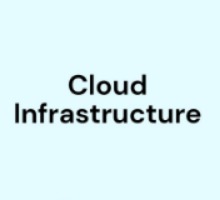Description
Azure Functions: Microsoft’s Serverless Offering
This training dives into Azure Functions, Microsoft’s serverless computing solution, enabling developers to build event-driven applications without managing infrastructure. Learn to deploy, scale, and monitor serverless functions to streamline your cloud development process, reduce costs, and accelerate application delivery.
Prerequisites
- Basic knowledge of cloud computing and Microsoft Azure.
- Familiarity with at least one programming language like C#, JavaScript, or Python.
- Understanding of event-driven programming is helpful but not mandatory.
Table of Contents
- Introduction to Azure Functions
1.1. Overview of Serverless Computing
1.2. What Are Azure Functions?
1.3. Benefits of Using Azure Functions
1.4. Real-World Use Cases - Azure Functions Architecture
2.1. Function App Structure
2.2. Triggers and Bindings Explained
2.3. Supported Languages and Runtime Options
2.4. Lifecycle of a Function - Setting Up Azure Functions
3.1. Creating an Azure Account
3.2. Setting Up the Azure Portal
3.3. Installing Development Tools (Visual Studio, CLI, etc.)
3.4. First Function Deployment - Triggers and Bindings
4.1. Types of Triggers (HTTP, Timer, Queue, Event Hub, etc.)
4.2. Input and Output Bindings Explained
4.3. Combining Triggers and Bindings for Complex Workflows
4.4. Real-World Scenarios - Developing Functions Locally
5.1. Setting Up a Local Development Environment
5.2. Writing Functions in Visual Studio/Visual Studio Code
5.3. Debugging Locally
5.4. Deploying Locally Developed Functions - Scaling and Performance Optimization
6.1. Consumption vs. Premium Plans
6.2. Auto-Scaling Based on Event Volume
6.3. Cold Start Issues and Mitigation Techniques
6.4. Optimizing Function Execution - Azure Functions with Event-Driven Architectures
7.1. Using Event Grid with Azure Functions
7.2. Integrating Functions with Azure Service Bus
7.3. Orchestrating Workflows with Durable Functions
7.4. Real-Time Event Processing - Integrations with Azure Services
8.1. Connecting to Azure Storage
8.2. Integrating with Azure Cosmos DB
8.3. Leveraging Azure Logic Apps for Advanced Scenarios
8.4. Using Azure Functions with APIs and Webhooks - Security and Best Practices
9.1. Authentication and Authorization in Azure Functions
9.2. Managing Secrets with Azure Key Vault
9.3. Securing Endpoints and Data Transfer
9.4. Monitoring for Potential Vulnerabilities - Monitoring and Troubleshooting
10.1. Using Application Insights for Monitoring
10.2. Logging and Telemetry in Azure Functions
10.3. Troubleshooting Common Errors
10.4. Performance Tuning and Metrics - Real-World Applications
11.1. Building Serverless APIs with Azure Functions
11.2. Automated Data Processing Pipelines
11.3. Serverless Backend for Mobile Apps
11.4. IoT Event Processing - Cost Management
12.1. Understanding Pricing Models
12.2. Estimating Costs for Azure Functions Usage
12.3. Best Practices for Cost Optimization
12.4. Managing Billing Alerts - Advanced Topics
13.1. Durable Functions for Long-Running Workflows
13.2. Using Azure Functions with Kubernetes (KEDA)
13.3. Writing Functions with Advanced Language Features
13.4. Future of Azure Functions in Cloud Development - Hands-On Labs and Projects
14.1. Lab 1: Deploying Your First Function
14.2. Lab 2: Building a Serverless API with Azure Functions
14.3. Lab 3: Real-Time Data Processing with Event Hubs
14.4. Project: Design and Deploy a Serverless Solution - Conclusion and Next Steps
15.1. Key Takeaways
15.2. Learning Resources for Azure Functions
15.3. Certifications and Career Pathways
15.4. Continuous Improvement with Azure Functions
Conclusion
Azure Functions empower developers to build scalable, event-driven applications without worrying about infrastructure. By mastering Azure Functions, you can optimize costs, improve agility, and deliver robust cloud-native solutions efficiently.







Reviews
There are no reviews yet.